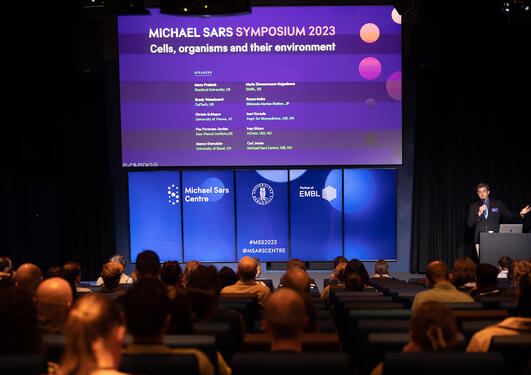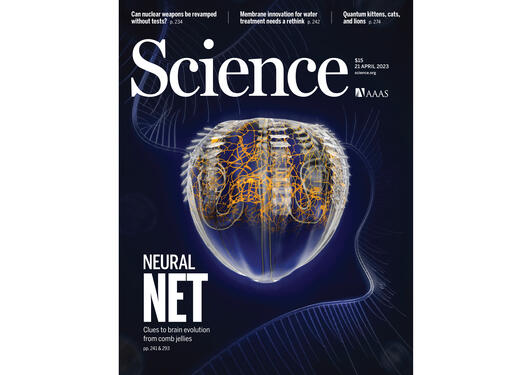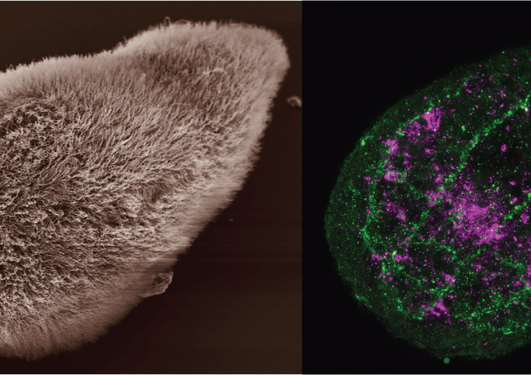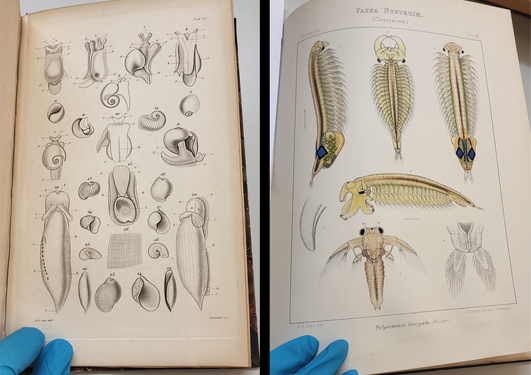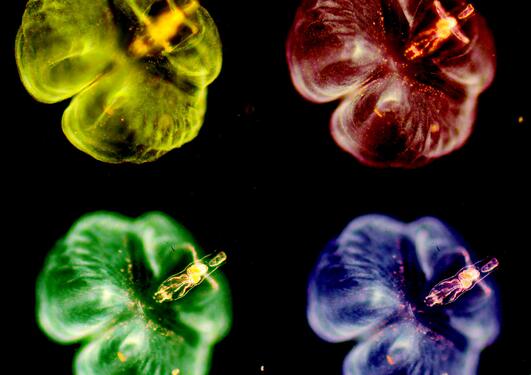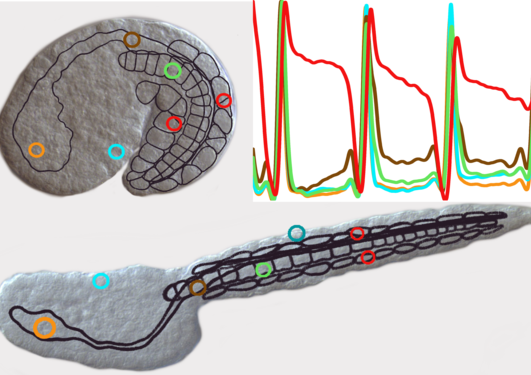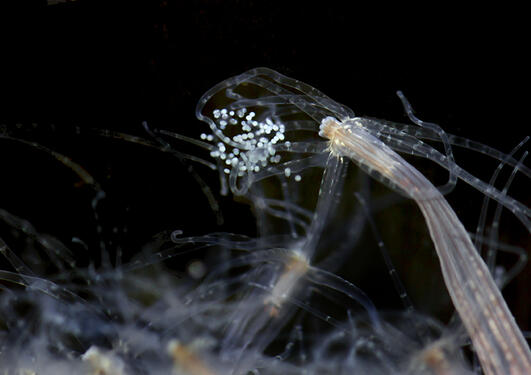News archive for Michael Sars Centre
For the second edition of the Michael Sars Symposium, 120 attendees joined us at Media City Bergen for a day filled with inspiration, information, and insights celebrating marine science.
The international workshop that occurs every three years attracted over 50 participants who gathered in Bergen to share the latest advances in the field. Michael Sars Centre aquarist Alexandre Jan was an Invited Speaker and also gave a tour of the Centre's state-of-the-art facilities.
For the next five years, the ERC grant will allow Prof. Eivind Valen to develop new informatics methods to explore a basic molecular biology mystery that remains unsolved: the cap code.
A new article published in Science suggests fundamental differences of nerve net architecture that challenges our previous understanding on the evolution of nervous systems and how they transmit information.
A year ago, scientists from across Europe came together concerned about how noise pollution was impacting not only marine life but the health of our oceans. Together they built a consortium that aims to understand how noise produced by humans, or anthropogenic noise, affects marine life.
Human Frontier Science Program (HFSP) Research Grant for Fred Wolf and Pawel Burkhardt.
A new paper explores the diversity of pH-sensing receptors, revealing an unexpected range of functions for these crucial neuronal proteins.
The Michael Sars Centre addresses universally important questions about the molecular and cellular biology of marine organisms. This film introduces some of the unique marine life we study and what we can learn from them. (Norwegian with english subtitles)
The second edition of the Michael Sars Symposium will take place at Media City Bergen on June 1st, 2023 in Bergen, Norway.
The Sars International Centre for Marine Molecular Biology is changing its name to the Michael Sars Centre to honour the extraordinary contribution to science of one of Norway's most significant marine biologists. The center will now become part of the Faculty of Mathematics and Natural Sciences.
Maria Sachkova will build her own research group after accepting a position as lecturer at the University of Bristol.
Famous Bergen scientist Michael Sars made a lasting impact on the field of marine biology during his prolific career in the 1800's. We explored the Rare Books Collection at the University of Bergen in search of his original publications and beautiful naturalist illustrations.
Most of what is known of larvacean biology today comes from the study of a single species - Oikopleura dioica. A new report from Daniel Chourrout’s group introduces the very first long-term culture of the larvacean Fritillaria borealis, finding major differences to well-studied Oikopleura.
Calcium signaling is important for many developmental processes but has been studied in only a handful of animal species throughout the entire span of embryonic development. A recent study sheds light on the importance of calcium waves during development in the tunicate Oikopleura dioica.
Chiara Castelletti and Vincenzo Perria are here in Bergen to reveal the secrets of Ciona’s development and its resilience to climate change.
Blood systems allow the transport of nutrients throughout the body in many animals. A recent study looking at nutrient transport in a sea anemone highlights the simple cellular and molecular mechanisms that allowed animals to transport nutrients before the existence of complex circulatory systems.
Animals show a remarkable diversity of behaviors. How these behaviors are generated by the nervous system is an intensely studied topic in modern neurobiology. A new paper explores how the behavioral repertoire of chordates evolved into the breath-taking complexity often admired in vertebrates.
The paper from the Lynagh Group was highlighted as one of the journal’s Editors' Picks, which represent the top-rated papers published in JBC across the field of biological chemistry, and was selected for its ‘exceptional contribution to the field.’
Pages
- 2025
- 2024
- 2023
- 2022
- 2021
- 2020
- 2019
- 2018
- 2017
